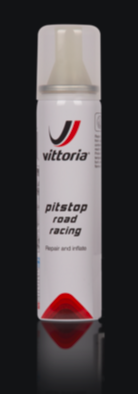Problem with patching is that it does not work (the patch wont hold) when it is warm, say >30°C. I had that several times. I carry two spare innertubes now, butyl, not latex or tubolito. I ride latex, but had blowups filling latex with co2 , so carry butyl as spares.
Think about valves and valve-extensions beforehand. I carry 2 co2 cartridges, but also a minipump.
But I really wanted to mention that I absolutely love my Lezyne Pocket Drive minipump. I used to use all CO2, but the disc wheel has special challenges - it was impossible for me to reliably get a CO2 head into the cutout area with a good seal, even the smallest ones - they’d fail at least 30% of the time (I went through over 12 CO2s in practice trying to get it right!) and the rapid inflation is risky for my disc due to potential pinching of the latex tube.
The Lezyne Pocket drive solves everything - it screws onto the presta valve so no pump head to get blocked in the cutout, stores super small (I put it in a normal bento box easily with tube and other flat kit prep), and pumps really well for a minipump - I can get to 80+psi without problem or struggle. Love that I can pump slowly and check the tube mount before I get it all the psi all the way up. Have flatted several times on training rides since, and this pump has been awesome.
I’ll also add that one thing I recently added to my flat kit are adhesive tire boots for rips in your tire. I had one in a race and then another recently - with a tire rip, your tubes will blow out the rip so you’re totally screwed unless you can boot the rip. I never thought this sort of stuff would happen to me, but turns out even GP5000s will get shredded if you have badluck and hit sharp debris fast. For $6-8 on Amazon for several adhesive tire boots, I’d highly recommend you throw this in your flat kit for training or racing.
Sounds like a potential solution for disc wheels
What disc wheel do you have?
Premier Tactical disc wheel.
At home, I use a floor pump with the $100ish Hiro chuck which fits into the small hole for the disc.
But on the road, the Pocket drive works awesome. It actually grabs the presta valve better than the Hiro chuck, but with the Hiro you don’t have to screw it on-off all the time, and with latex you know you’re doing that every single ride, so it gets old quick. For a road flat that’s rare, it’s actually better to have that guaranteed no-leak seal given the small hand pump (everyone knows otherwise how frequently mini pumps don’t seal right at the presta valve attachment, especially when pumping hard.)
Of note as well, I do carry a tiny valve core replacement tool in my flat kit since there’s a chance that if you overscrew the Pocket drive onto the presta, you’ll unscrew the whole valve core (and lose all your air) when unscrewing it - the core gets stuck in the pump head and is nearly impossible to remove without the tool (so you’re totally f-ed). I’ve practiced this a bit so I know that you just have to screw the pump on just until it seals, and don’t go all crazy, but the core replacement tool should be in there just in case.
